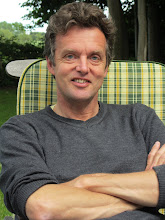FINNAIR
Finnair is the national flag carrier of Finland, and is majority owned by the Finnish Government. It has been flying since 1923, and has not had a fatal or hull-loss accident since 1963.
My wife and I flew with Finnair to Hong Kong. And therein lies a tale. Within Europe, Finland sits awkwardly at the top, with nothing except snow, sea and ice to the north, and vast, empty expanses of Russia for much of the east. If you are not visiting Finland directly, then you are unlikely to go there. With regard to East Asia, on the other hand, Finland sits in exactly the right place, on the relevant great circle that aeroplanes use. In 1983 Finnair became the first airline to fly non-stop between Europe and Japan; it then followed it up in 1988 with the first non-stop service between Europe and China.
In conjunction with Helsinki Airport, Finnair has built on that geographical advantage. The airport has a separate "Asia" terminal, necessary for passport checks in and out of the Schengen region. You would expect all of the signs to be in Finnish, English and Swedish (there is a sizeable Swedish-speaking minority in Finland), but not that they are also in Mandarin and Korean. Daily flights to China, Korea, Japan and Hong Kong are coordinated so that they leave around midnight, arriving mid-afternoon local time the next day. On the way back, the process is the same, so you leave around midnight and arrive in Helsinki around 6am. You can fly to Asia with other airlines (eg KLM and Air France); however, not only would that add an extra 4 hours or so each way (2 from Copenhagen to Paris/Amsterdam and 2 back again), but the schedules are hopeless with regard to sleep patterns. I normally get terrible jetlag, but this time I was barely affected, even though we went almost halfway round the world.
Asian sensitivities in Helsinki are matched in the aircraft itself. Roughly half of our crew were Hong Kong Chinese, and all of the announcements/in-flight entertainment were in the three European languages and Cantonese. I was impressed.
All in all, it was a good example of how a small, rich country has thought through its global competitive advantages, and then put them into practice. Helsinki gets terrible weather in the winter, but the airport has invested in the necessary infrastructure and equipment to make sure that there are no operational problems. Other countries with better weather (the U.K. springs to mind immediately) could learn from those unobtrusive Finns.
Walter Blotscher
Saturday, 25 February 2012
Subscribe to:
Post Comments (Atom)

No comments:
Post a Comment